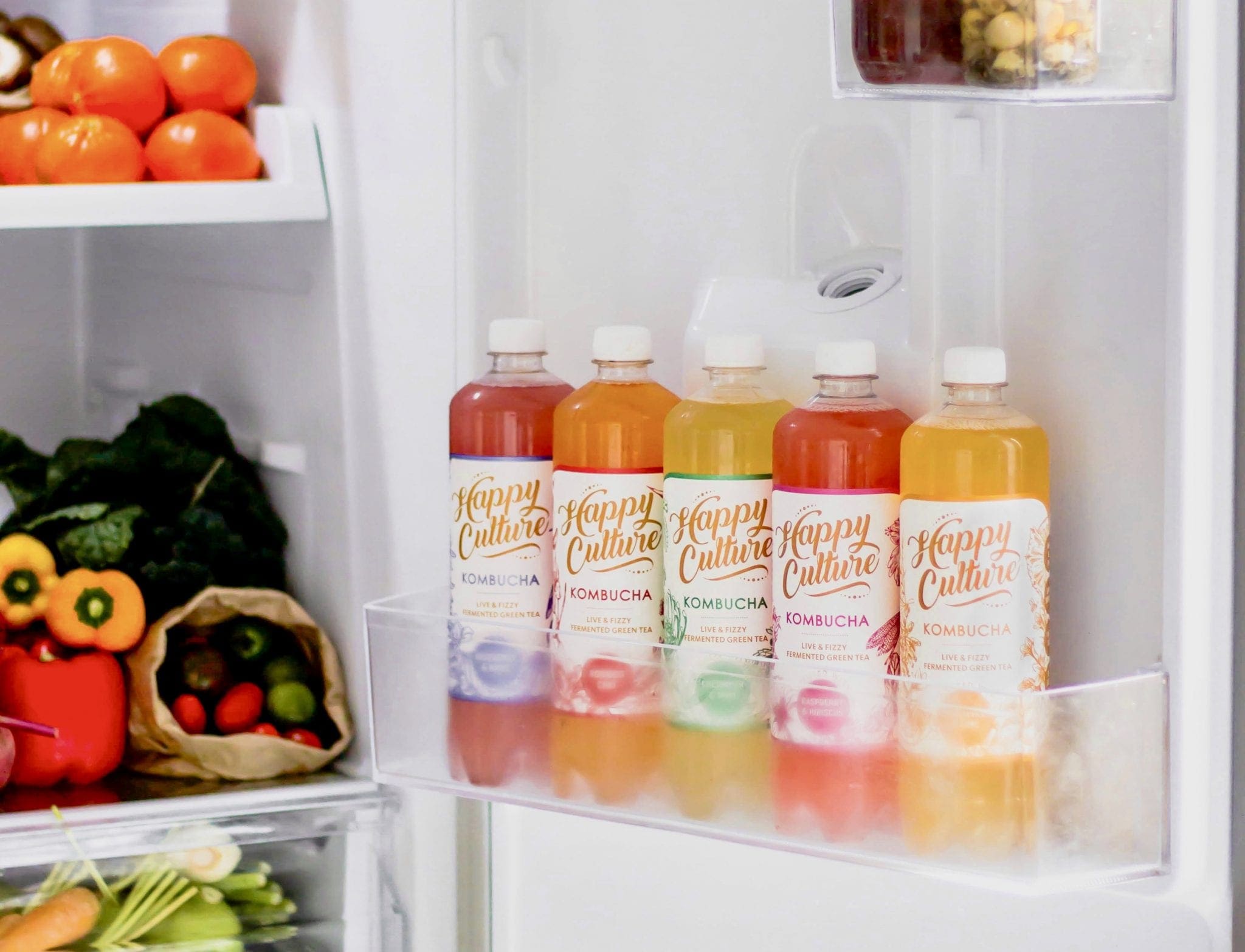CONTRARY to what we might believe – or want to believe – woman cannot live by wine alone. Or champagne, for that matter. Sad, but true.
However, there is a time and a place for a non-alcoholic beverage. When Manon and Mark Jones got in touch with me about their new kombucha drink called Happy Culture, they very cleverly hooked me in by mentioning their Cap Classique background at Colmant in Franschhoek. Although I wasn’t yet convinced by the kombucha part, I agreed to meet with them. Try anything once, right?
Turns out Happy Culture was a happy surprise.

Launched in September after a year in development, Happy Culture is a blend of Mark and Manon’s passion for bubbles – and their experience with the double fermentation process – and health. Kombucha is the fastest growing beverage category in the world, says Mark, and their vision is to change the market to one where consumers can go to the shelves and have access to something that tastes delicious and is good for you.
“We obviously won’t please everyone but it’s something the general market can get excited about,” says Manon. “Being healthy doesn’t have to be an unpleasant experience. It doesn’t have to be torturous, and it doesn’t have to be weird,” she smiles. “Our aim is to make it accessible.”
A fermented, slightly effervescent tea, kombucha is claimed to have numerous health benefits. “But don’t drink it because it’s good for you; drink it because it tastes good,” says Mark.
“A bottle of Happy Culture has the equivalent health benefits of a cup of green tea and also is good for digestion and detoxing,” says Manon. “It’s not the primary thing – it makes you feel good and it’s yummy. It’s been nicknamed ‘the Champagne of life’ overseas as it has a lot of similar characteristics, acids and yeasts, and you’ll recognise some flavour components.”
Happy Culture is brewed in Stellenbosch using teas, cold pressed juices, herbs and spices, botanicals and natural extracts. Low in sugar, the drink is fresh, clean and elegant.
It’s very Cape Town, with a threefold play on the name: the inspiration of our city, the creation of a happy culture of people, and keeping the live cultures happy during the brewing process. “We play 432 hertz music in a perfect atmosphere with Himalayan salt rock lights, and rose quartz crystals scattered around,” explains Mark.
All the bottles even have a little heart underneath to keep that happiness going.
“People say when they drink it they can feel good vibrations, and we tell them about the brew room and they’re amazed they can notice it,” says Manon.

Maybe it’s the music and the crystals, or maybe it’s the live culture, probiotics and a small amount of caffeine. After hearing the story, it was time to taste as therein lies the proof. The range currently includes cucumber and mint, ginger and lemon, rooibos and chai, and blueberry and basil. Or as I like to call them: green, yellow, orange and red.
My favourites are the cucumber and mint, and the lemon and ginger – both refreshing and not too sweet. If you really can’t deal without alcohol, Happy Culture will play well with gin or vodka, and is an excellent match with your MCC. “It lends a little bit of fruit flavour to the bubbles, and it keeps its own bubbles, unlike fruit juices which can make the drink go flat,” says Mark.
“They elevate each other,” agrees Manon. “It’s also a great palate cleanser.”
Overall, it was a lot better than I expected, and a welcome addition to the non-alcoholic market.
Happy Culture retails for about R25-R30. For more information, email [email protected] or click here.
PHOTO CREDIT: BIANCA COLEMAN ©
